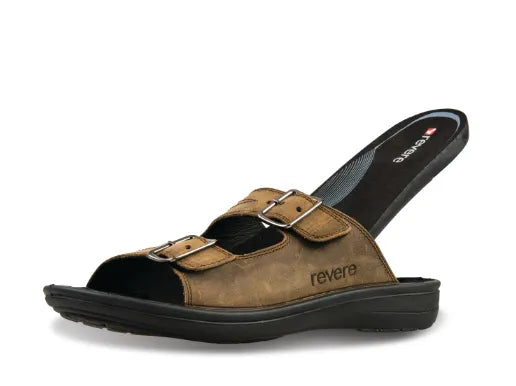
What is Orthotic Friendly Footwear?
Share
One of the best things about the majority of The Comfort Co. footwear range is that it provides top of the range Arch Support. Which can be essential to people with foot conditions such as plantar fasciitis & flat feet. (For more info check out the “What is Arch Support?” blog.)
However good this Arch Support may be, sometimes people may need a little more. They may have a health condition they’ve seen a podiatrist about and have a tailor made set of orthotics. Or they may just like the way a certain pair of store bought orthotics feel (if you’ve had a go with Vitasole’s Everyday Insoles, you wouldn’t blame them).
Now they need some shoes where this over the top comfort fits in seamlessly.
What makes a shoe orthotic friendly?
Fitting the orthotic
A shoe wouldn’t be very orthotic friendly if you can’t fit your orthotic in it. But simply buying a larger pair of shoes to accommodate your orthotic can be a shot in the dark.
A truly orthotic friendly pair of shoes will have features ensuring you can fit your orthotic without having to rely on guesswork.
Removable insoles
It’s very difficult to put something else in if you’ve already got an insert in. The insole is the part of the shoe inside it that your foot sits on. If your shoes feature removable insoles it means you can take this part out to make room for your orthotic.
Normally this is a feature of only closed-in shoes. But what about in hot climates where you just need to wear sandals? Revere has thought of that and has a range of sandals with removable footbeds for people that need their orthotics 24/7.
Extra Depth
In addition to a removable insole, an orthotic friendly shoe will generally be a little bit deeper. This gives you more space once the orthotic is inserted so your foot doesn’t rub against the top of a shoe.
This is particularly important for shoes for Diabetics. If their foot rubs against a shoe in the wrong way it can cause a multitude of health issues. Anodyne has the most technically advanced diabetic friendly shoes on the market where this will not be an issue.
Wide Toe Box
The “Toe Box” refers to the area in the front of the shoe where your toes sit. If this part of the shoe is tight, orthotics often squeeze it tighter. Which causes health issues at the best of times, but can be horrendously painful if you have hammertoes or bunions.
Adjustability
Even with extra features thrown in to accommodate an insole, the best way to ensure the perfect fit is to make the shoe customisable. Orthotic friendly laces, buckles, velcro or straps mean your shoes can fit to any foot, insole or not.

Compensating in other areas
If you’ve bought a good pair of shoes, a lot of thought has gone into its design (at least that’s true for The Comfort Co range). All the pieces work together.
Taking a part out and replacing it with something else can cause problems with alignment and stability. An Orthotic Friendly pair of shoes counteracts this issue by compensating in other areas.
Stable Heel Counter
The Heel Counter of your shoe is one of the most important parts to keep your foot in place. Having a firm heel counter will keep your foot stable as you walk and ensure your foot aligns correctly within the shoe.
But what if you’re thinking about a pair of Revere Orthotic Friendly sandals? These sandals actually have an entirely removable footbed. Meaning your orthotic fits in seamlessly to where your footbed would usually sit. We’ve really thought of everything.
Durable Outsoles
As mentioned, in a well designed pair of shoes all the parts work together. Orthotic Friendly footwear will always feature an extra durable outsole to compensate for the change (and be better quality if you have it as is). Made from very high quality materials your outsole provides extra shock absorption and will provide protection from additional damage.
Conclusion
The decision is pretty easy when given the choice between orthotic friendly footwear and non orthotic friendly footwear. Even if you don’t wear an orthotic the features in an orthotic friendly pair make the shoes of higher quality. It also gives you the option to transition to an orthotic down the track.
We think orthotics or at least arch support are a part of growing up (they’re outrageously comfortable AND good for you, so why not?) Being ready for it is the first step.
